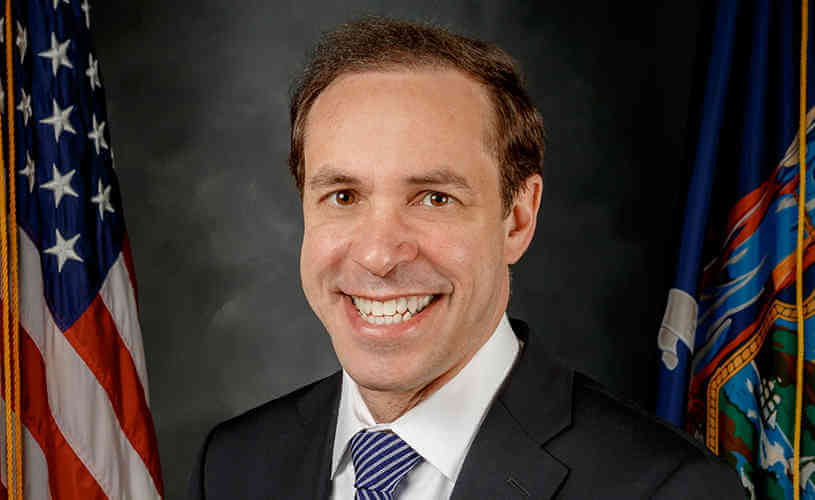In a report that will be read by public health officials across the country, the New York State Health Department has declared that legalizing marijuana would bring positive benefits; the “pros outweigh the cons,” opined Dr. Howard Zucker, the state health commissioner.
The report, which went public last week, makes it clear that legalization will improve health outcomes. After reading the report, it would be easy to conclude pot smokers are no different from the rest of the population. The report emphasizes that consumer safety will improve with laboratory-tested pot, its potency carefully labeled and customers able to pick the plant that brings the most satisfaction. Here health and pleasure form a useful synergy, and regulations reduce risks.
The risk that an emancipation effect will spur a sudden surge in use is low. By age 18, 52 percent of New Yorkers have tried marijuana. Under the current system, there is no shortage of supply, and the report suggests that limiting sales to licensed stores will make it more difficult for those under 21 to find pot.
Current law fails to restrict supply, and that means arresting users and suppliers accomplishes little. The report implies pot busts are cruel and pointless.
Sustaining these penalties are scare stories about marijuana that create fear but lack merit. A big lie is enshrined in federal law; it declares marijuana is a Schedule 1 drug with “no medical use” and a high potential for abuse. The problem of abuse can better be addressed after legalization when its use will be regulated. The report expresses the hope that legalizing pot will reduce the use of opioids.
Some studies have indicated that in places with medical marijuana there are fewer opioid overdose deaths. New York State has seen a 180 percent increase in overdose death between 2010 and 2016 to more than 3,000 a year, and every year more people die than the year before.
Occasionally a dry wit is displayed in Zucker’s report. During a discussion about marijuana causing a loss of motivation, it is described as a “temporary transient state,” not a permanent condition. Findings like these lead to the conclusion that marijuana is less harmful than alcohol or tobacco and undermine the rationale for its prohibition under federal law.
The exaggerated claims about harm from marijuana have been accompanied by a vicious enforcement policy. “Statewide, New York’s marijuana arrest rate of 535 arrests per 100,000 people was the highest of any state in 2010 and double the national average” with 103,698 arrests for possession, according to the report.
“The impact of low level marijuana offenses extends” beyond expenditure of criminal justice resources, the report notes. “Individuals who have a criminal record often face challenges throughout their lives.” It disproportionately criminalized black and brown residents. In 2017, the problem persisted, the reporting finding that “86 percent of the people arrested for marijuana possession in the fifth degree in 2017 were people of color; 48 percent were Black, and 38 percent were Hispanic. Only nine percent were White.” And the black and brown defendants received tougher punishment than whites.
Strikingly, “It is rare that these arrests lead to the discovery of guns or violent crimes,” the report stated.
And arrests have a health impact: Arrests and incarceration disrupt families, hindering access to education and health care, and increasing poverty “particularly in low-income communities of color where arrests are concentrated despite equivalent rates of marijuana use across racial groups,” the report stated. “Incarceration of family members destabilizes families and is considered an adverse childhood experience (ACE).” Incarceration also has “an impact on community health in many areas (including teenage pregnancies and sexually transmitted infections).”
Legalization will bring improvements in community health for low-income neighborhoods, the report concluded.
To rectify past harms, the report recommends that “NYS expunge the criminal records of individuals with marijuana-related offenses.”
Meanwhile, developing tests for driving while using marijuana will improve once tax revenues from pot sales can finance this research.
Legalization will create a new industry in New York State. The report estimates that at “an average retail price of $270 per ounce, the market for marijuana is estimated to be approximately $1.7 billion; at $340 per ounce, the market is estimated to be approximately $3.5 billion.” Estimated tax revenues could fall between $248 million and $677 million, but the goal of raising taxes conflicts with the public policy imperative of ending the illegal market. The more expensive legal marijuana is, the greater the likelihood that the unregulated market will continue.
Preliminary data from Colorado suggests that legalization did not bring “statistically different” vehicular crash rates — though studies of marijuana impacts on traffic accidents are funded only sporadically and the data is imperfect.
The State Health Department’s “Assessment of the Potential Impact of the Regulated Market in Marijuana for New York State” argues that legalization improves public health and recommends that its licensing be separate from alcohol and tobacco. The details are not spelled out in the report but will be debated during the coming year. Health is no longer the issue; the hows and wheres are what are left to be decided.


































